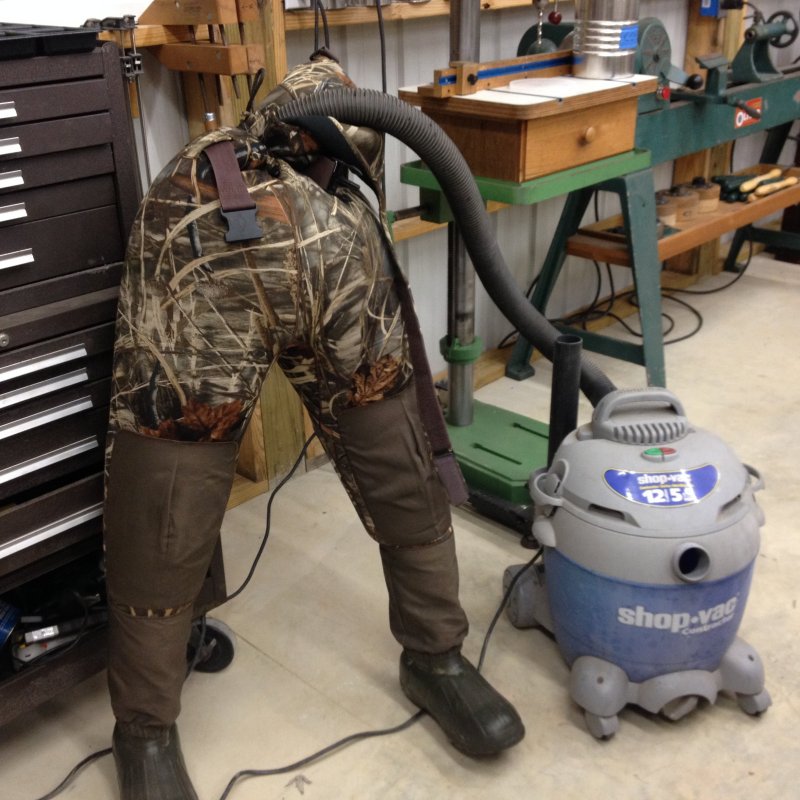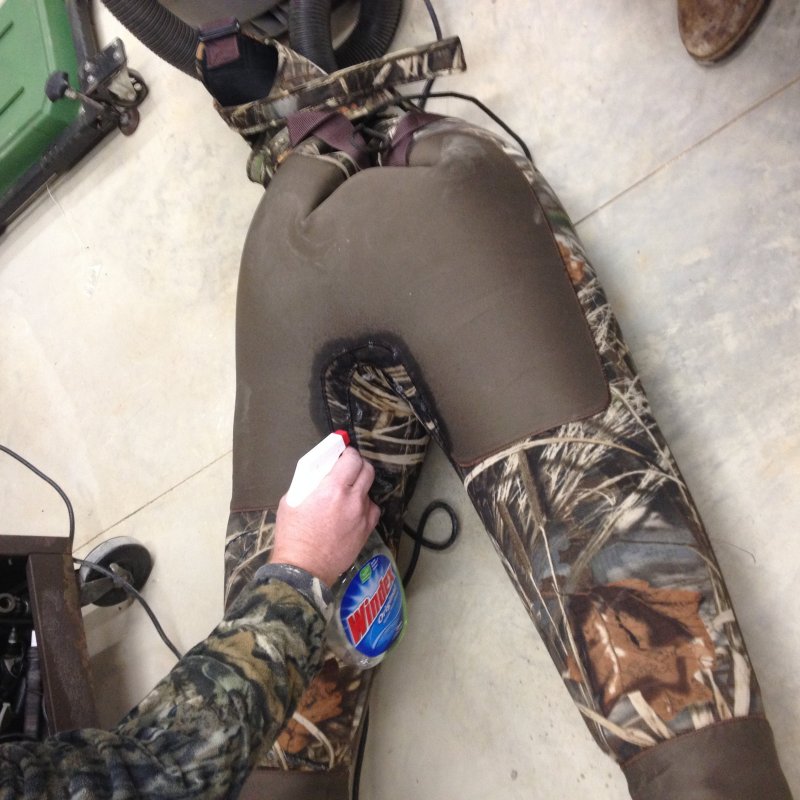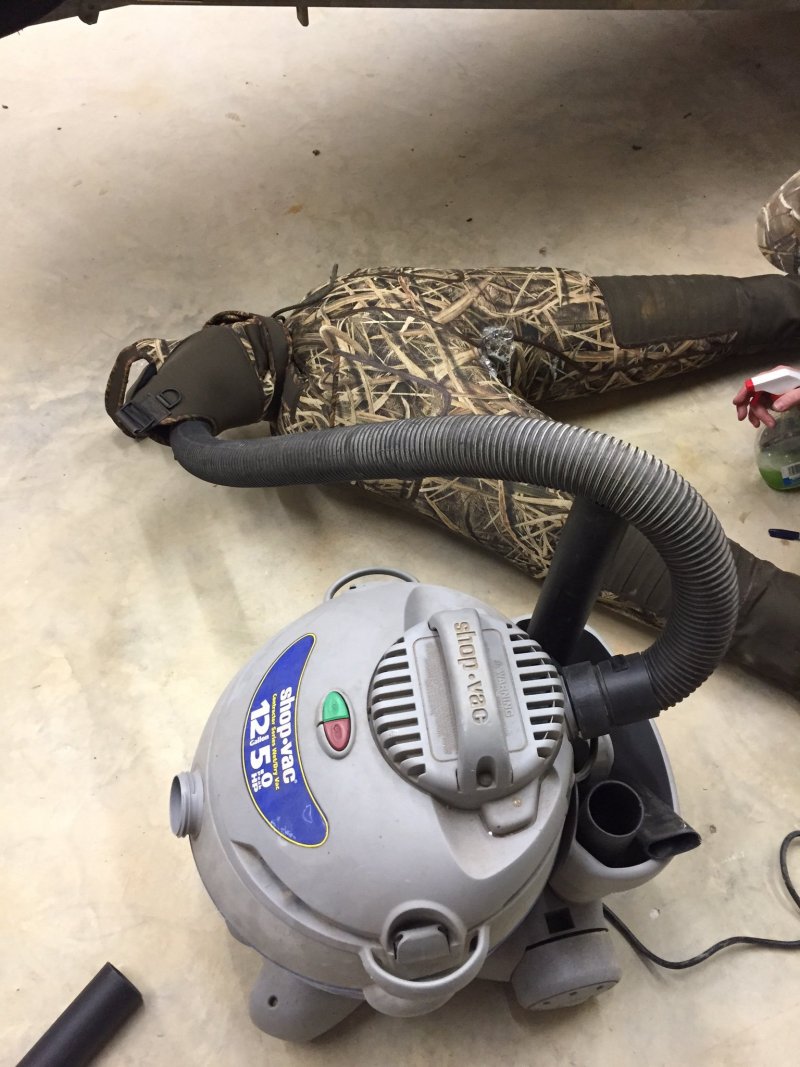I don't know what is going on with wader manufacturers but the quality has tanked in my best estimation. I rarely get a season out of a pair before they start leaking, usually in the crotch. One of the frustrating things is patching them, more specifically finding the actual source of the leak. Unlike rubber waders leaks aren't so easy to find since light does not find its way through neoprene even when there is a hole. Tonight while trying to patch some waders my hunting partner, Nic, and I rediscovered an age old technique that worked great.
If you ever get a leak in a tire one of the thigs they will do is inflate it and spray sudsy water and look for bubbles. We took that same concept and applied it to neoprene waders. After unsuccessfully trying to use an air hose to inflate my waders (leaked air and pressure too great) we turned our attention to the lower air pressure created by putting a vacuum hose on the discharge side. It worked beautifully. We stuffed the hose down in the waders and tied the top like a gym back with a piece of cord. it leaked but the vacuum was able to keep up and maintain pressure adequate to force air through leaks. Once inflated and air pressure stable I spayed the areas thought to e leaking with a 50/50 mix of dawn and water. It immediately began to bubble. With the hard part of locating the leak I patched holes with a 1000 denier patch and aqua-seal. I think this will get me a few more seasons out of a pair of waders.

Pressured up.

Looking for leaks.

Foaming at the crotch pinpoint leak source.
Try it. You'll save a few bucks and hunt warmer and drier.
If you ever get a leak in a tire one of the thigs they will do is inflate it and spray sudsy water and look for bubbles. We took that same concept and applied it to neoprene waders. After unsuccessfully trying to use an air hose to inflate my waders (leaked air and pressure too great) we turned our attention to the lower air pressure created by putting a vacuum hose on the discharge side. It worked beautifully. We stuffed the hose down in the waders and tied the top like a gym back with a piece of cord. it leaked but the vacuum was able to keep up and maintain pressure adequate to force air through leaks. Once inflated and air pressure stable I spayed the areas thought to e leaking with a 50/50 mix of dawn and water. It immediately began to bubble. With the hard part of locating the leak I patched holes with a 1000 denier patch and aqua-seal. I think this will get me a few more seasons out of a pair of waders.

Pressured up.

Looking for leaks.

Foaming at the crotch pinpoint leak source.
Try it. You'll save a few bucks and hunt warmer and drier.
